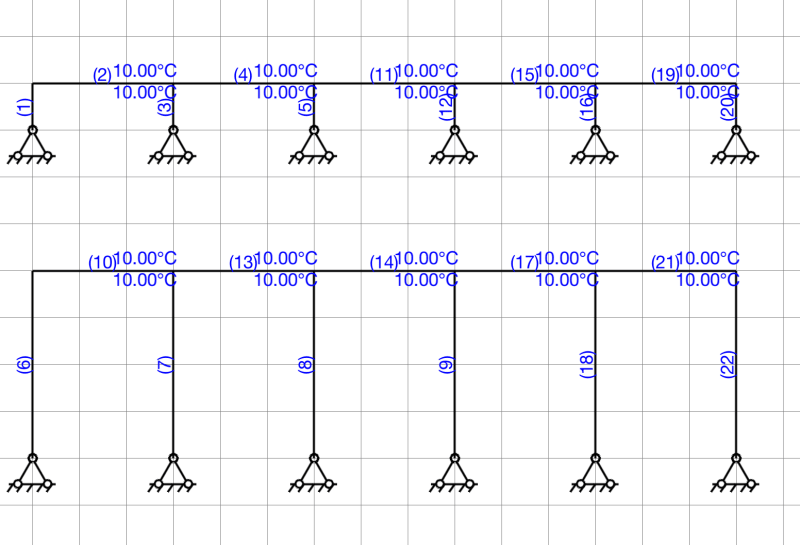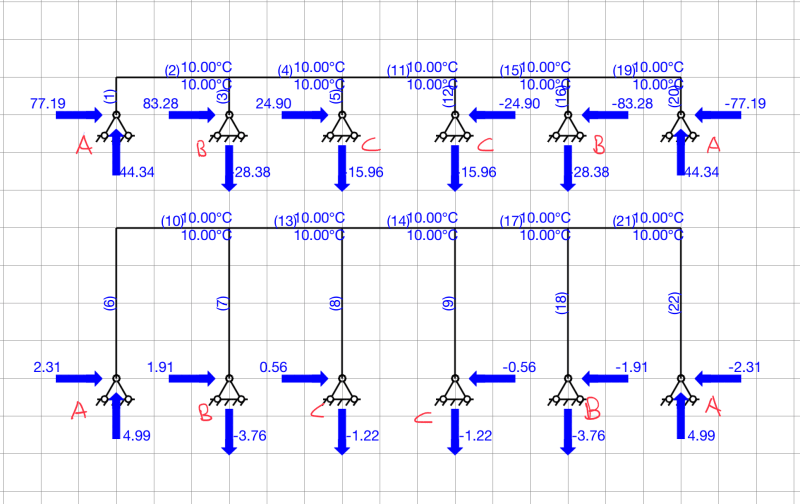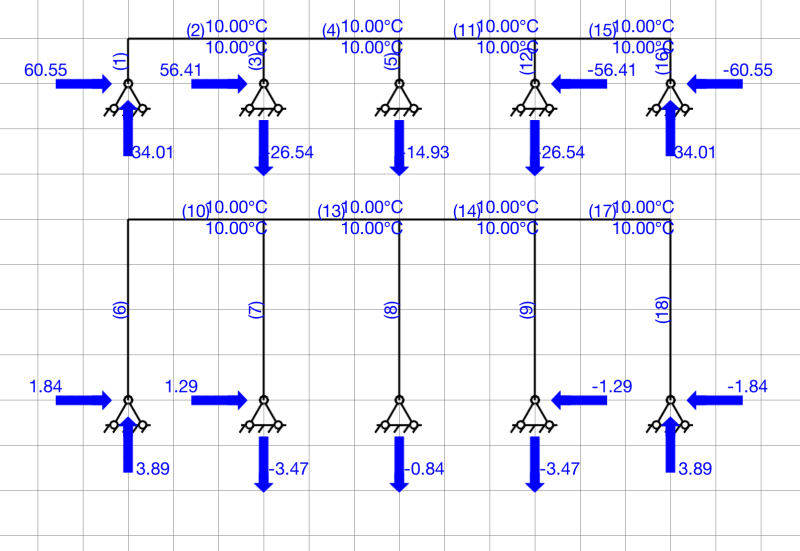I set up a 2D analysis to study the effect of thermal load on 2D frame.

Case 1 - with short column and 10 degree of uniform temperature
Case 2 - with long column and 10 degree of uniform temperature
My question is, why for case 1 horizontal reaction at point B is larger than point A?

I did another frame with 4 spans, the same temperature load.
The horizontal reaction at point B is smaller than point A in both short and long-column cases.


Case 1 - with short column and 10 degree of uniform temperature
Case 2 - with long column and 10 degree of uniform temperature
My question is, why for case 1 horizontal reaction at point B is larger than point A?

I did another frame with 4 spans, the same temperature load.
The horizontal reaction at point B is smaller than point A in both short and long-column cases.




